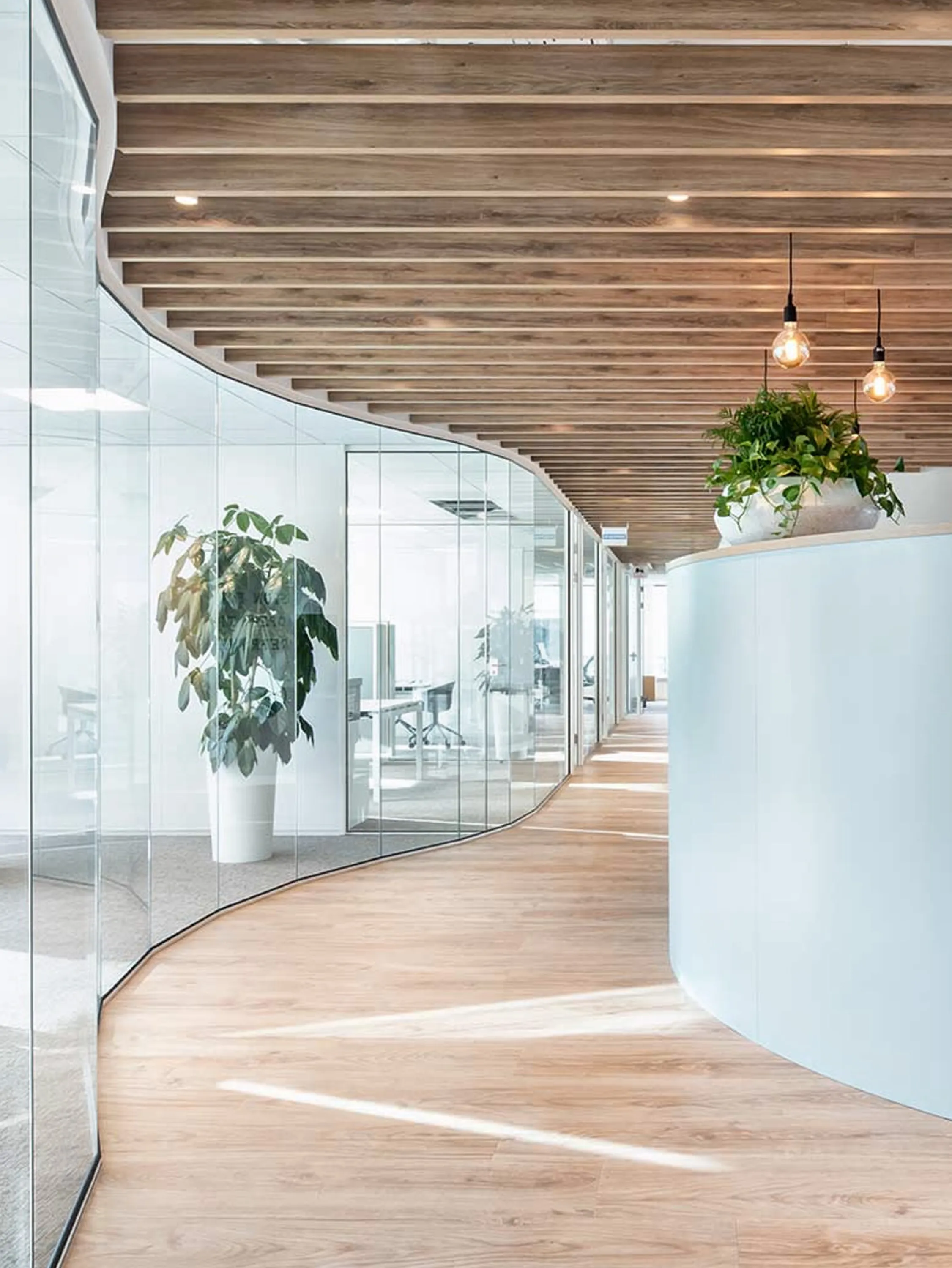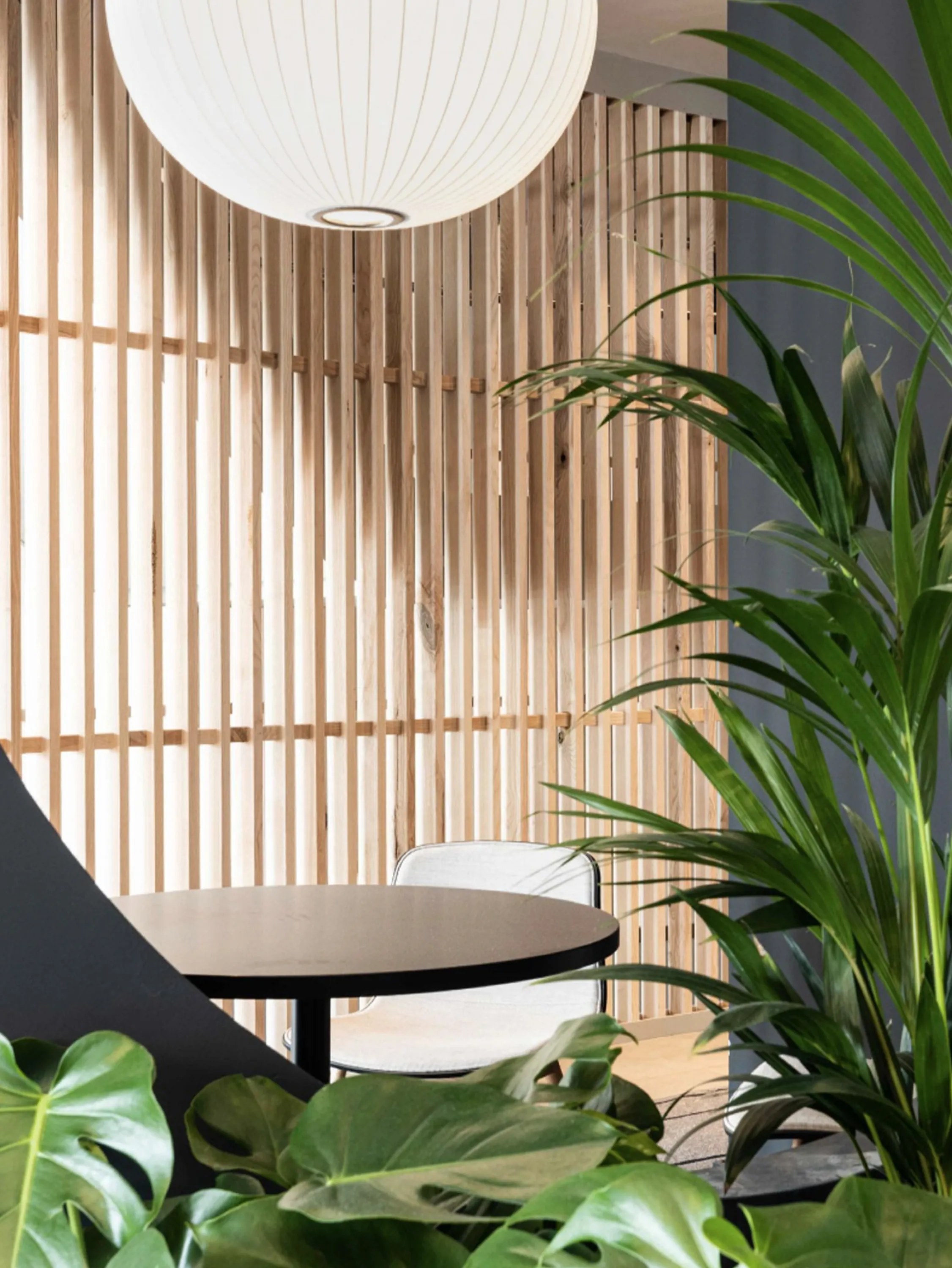How to bring biophilic design into offices
The office is a place to be productive, concentrated, and creative; all states that intentionally designed spaces can encourage and support.
This episode of Biophilic How To looks into the design of offices from a biophilic perspective, combining atmospheres, design choices, and the experience of space in a nourishing outcome…
Rich spaces
A biophilic office integrates elements of richness throughout the space and its experience.
Material choices, sensory elements, and layout solutions all contribute to a stimulating yet never overwhelming atmosphere, an atmosphere that’s conducive to a positive work life.

Designing a biophilic office
Natural materials and colours, rich textures, organic forms and living plants all contribute to an engaging and comfortable ambiance. Abundant natural light and ventilation as well as human-centric artificial lighting make the environment healthier, more lively, and conducive to quality work.
Connection to the outdoor world is a vital aspect that exposes people to positive distractions and makes them aware of the passing of time, the seasonal flow, and daily weather changes. Outdoor views and indoor-outdoor layouts both provide exposure to the surroundings through design. The notion of connection also extends to local specificities, suggesting the value of material choices, food options, as well as other locally relevant elements that nurture a sense of place.



Harmonizing opposites
Collaboration and concentration, productivity and recuperation… Workdays involve an alternation of mental states that are encouraged and supported by a balanced combination of diverse spaces.
Spaces for collaboration are open areas, able to accommodate groups and conducive to genuine exchange. Spaces for concentration are private areas, introspective spaces conducive to concentration and focus work. Spaces for social time are welcoming common spaces that encourage better interaction and strengthen relationships, both precious drivers for idea generation, out-of-the-box thinking, and real exchange. Spaces for quiet time are regenerative individual areas that carve calm moments of disconnection.
Designing diverse zones in the workplace and harmonizing them into a cohesive whole is a way to support people through design, accounting for different needs that vary throughout the day and across people.


As a whole, biophilic offices are designed for people. Considering what people need to feel good, they become comfortable and enjoyable spaces to be inspired, concentrate, and create.
Further resources:
Available in the shop, anooi’s publications explore the nuances of a biophilic ethos, highlight anooi’s perspective on the topic, and cover the studio’s ongoing research in biophilic thinking and design.